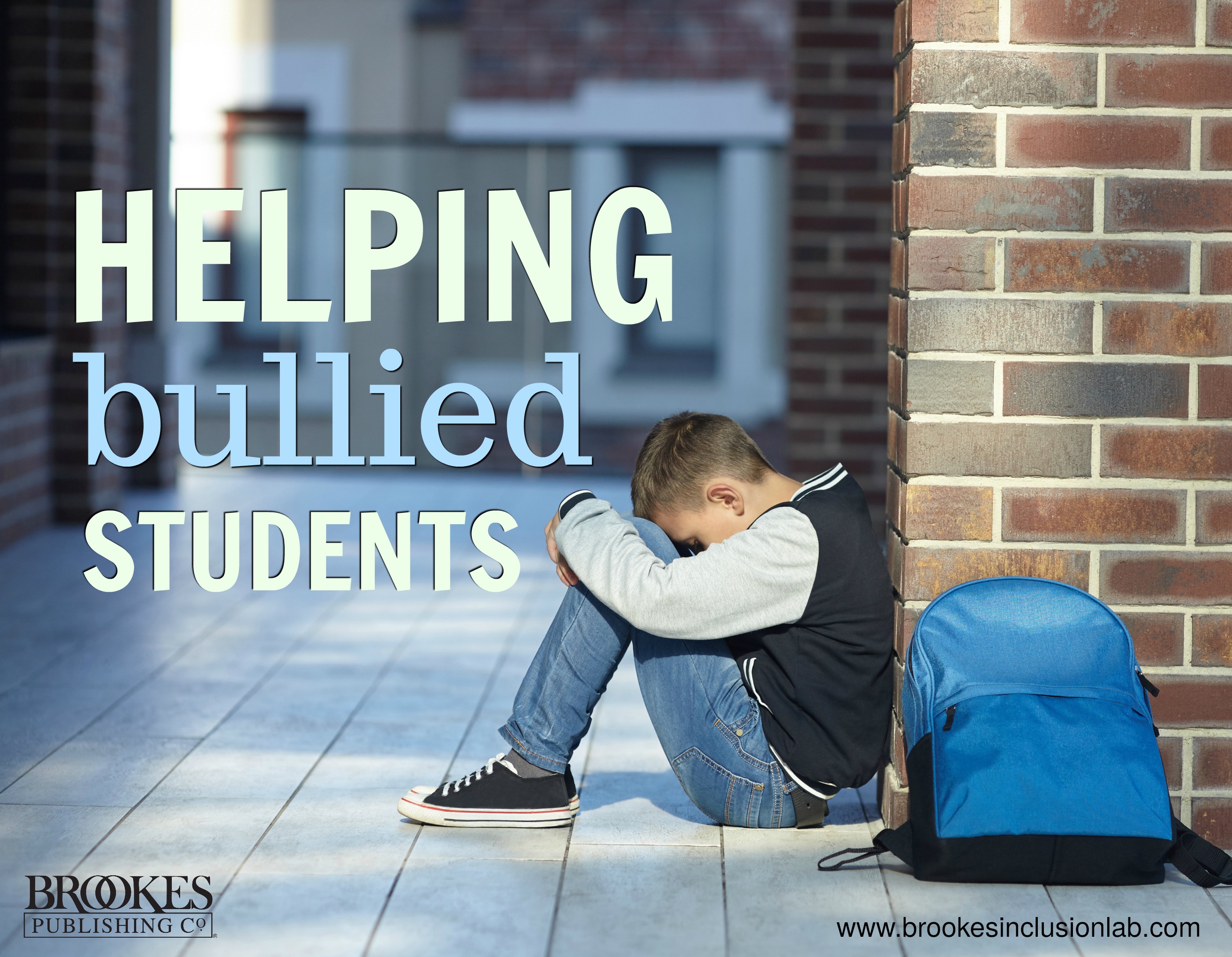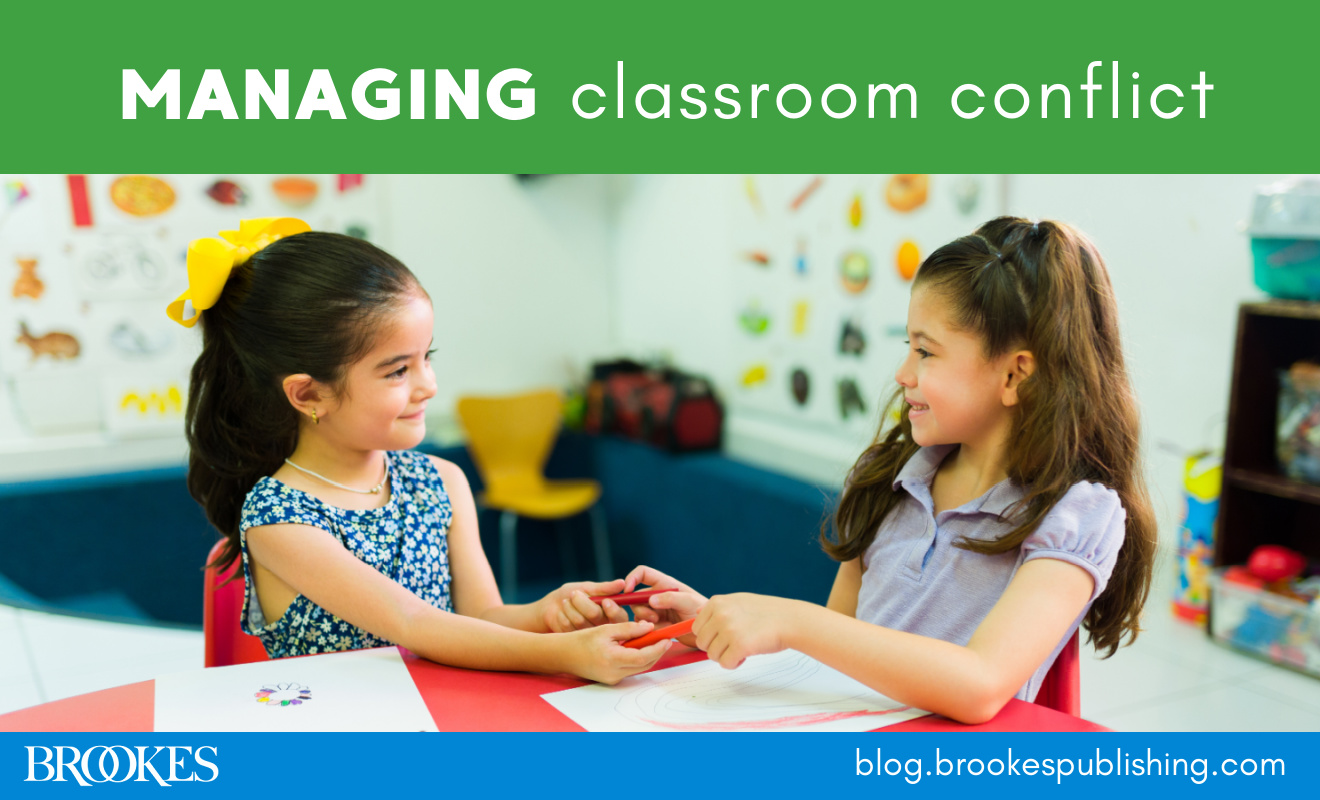How to Help When Students Are Bullied
October 10, 2017
October is National Bullying Prevention Month–a nationwide campaign founded more than a decade ago by PACER’s National Bullying Prevention Center. Each year at this time, we try to provide you with some practical tips and strategies that reflect the spirit of PACER’s campaign and help you support your school’s anti-bullying initiatives.
Today we’re bringing you some tips on how to intervene when students in your classroom are bullied. Excerpted and adapted from the teacher’s guide Recognize and Respond to Emotional and Behavioral Issues in the Classroom, by Andrew Jonathan Cole & Aaron M. Shupp, these guidelines will help you support students, collaborate with families, and create a safe classroom environment where bullying situations are less likely to occur.
Try an ounce of prevention
Prevention can be just as important as intervention. Use these guidelines to create an environment of respect and kindness in your classroom:
Set the tone. From day one, talk about bullying and other types of mistreatment in your classroom. Raise these topics often as the school year progresses. Make sure your students get the message that bullying is something you take seriously and will address directly and consistently. You don’t have to make long speeches about bullying–short reminders now and then will help you communicate your message loud and clear.
Make reporting feel safe. Actively foster an environment where students who are bullied (and their peers) feel safe coming forward and reporting their concerns. Encourage students to ask for help if they need it, and emphasize how brave it is to report a bullying situation.
Don’t let the small stuff slide. It can be tempting to brush off smaller incidents of name-calling and mockery. Some might say “they’re just kids being kids” or believe that the victim of this behavior will “toughen up” as a result. But these hurtful behaviors can escalate if adults don’t address them. You can’t intervene every time students have a minor conflict, but be vigilant and don’t ignore harmful behavior.
Communicate appropriate consequences. Make your expectations and the consequences of bullying clear, and be sure that the consequences are appropriate. (For example, don’t just tell the bullied student to stay away from the aggressor–this reduces the victim’s power and gives the bullying child a more dominant position.)
Know the signs
Not all students who are bullied exhibit the same signs and behaviors, but here are a few general guidelines. Keep an eye out for:
- A student who spends less time around other children or clings to those who make him feel safe
- Mood changes, which can be acute or prolonged
- Sudden tearfulness, fear, sullenness, or anger, particularly after an incident of bullying
- An overall decline in mood or functioning in school and other activities
- Self-deprecating remarks (which reflect the slights of others)
- Physical marks, such as redness on skin, bruises, torn bookbag, or dirt or food on clothing
- Attempts to cover up a physical feature or other characteristic that others have ridiculed
Don’t neglect the impact of bullying on bystanders, too. Even when children aren’t directly involved, watching someone else get harassed can intimidate and upset onlookers. Look for signs of distress not only in the child being bullied, but also in peers who may be a witness.
Address the student sensitively
If you suspect a student is being bullied–or if a student comes to you for help–how can you approach them in a way that makes them feel safe and supported? Here are some tips:
Respect autonomy. When you’re addressing a student you think is being harassed, use language that doesn’t inadvertently make the student feel powerless. Some students might ask you to help take responsibility for the problem, and that’s okay. Other students may feel demoralized by bullying and will benefit from empowerment. Let the student suggest what he hopes will change, and use “we” language, when possible, to help the student feel included in the solution.
Ask before advising. If a student reports being bullied or you suspect that the student is being seriously mistreated, don’t jump in with solutions right away. Make sure you give the student space to explain the problem. You might ask a few questions to get the specifics straight before thinking about next steps: “What insults have they said to you?” “Has he hurt you physically?” “What are you afraid she might do to you?”
Praise courage. Whether the student has been bullied or has witnessed a bullying situation, emphasize again that it takes courage to speak up and ask for help. Those are the first steps in addressing the problem.
Suggest safety options. If a child has ongoing concerns about a bullying situation, you might offer some basic strategies that may help reduce the impact: using assertive, nonaggressive statements to tell the peers to stop; walking away; telling an adult; spending free time with peers who are safe.
Leave your door open. A child who is bullied may decline your support. If that happens, let the student know that you and other adults at the school are ready and willing to help if she needs you in the future. Checking in with the student occasionally can underscore the message that your “door” is always open for her.
Consider training. Addressing bullying situations can sometimes be challenging and intimidating. If you haven’t had formal training on how to identify and manage bullying in an educational setting, consider requesting such training from your school.
Talk to the family
When a child is being emotionally or physically hurt, how can you address the issue with family members? Here are a few guidelines to keep in mind:
Anticipate a range of emotions. Parents can experience a wide spectrum of strong emotions when they know their child has experienced bullying. Be prepared for a range of different responses: parents may show signs of visible distress, express anger toward the school and its professionals, share feelings of fear and sadness, or communicate a sense of urgency to resolve the problems.
Ask for their input. Get the family involved in problem-solving by asking them to describe what they know about the situation and how their child has reacted at home. Has the child been holding back emotions at school and them “letting it out” at home? Families can provide unique and critical insights that deepen your understanding of the situation and what the child might need.
Collaborate on confidence-boosters. Together with parents, brainstorm some activities that can help increase the child’s confidence and sense of accomplishment. Confidence-boosters may offset the demoralizing effects of being teased or bullied.
Decide when to refer to an administrator or a mental health professional
When should you refer a child for additional help and support outside your classroom? Consider this step when:
- You feel intimidated by an aggressive student, or you think that a student poses a danger to herself of others. If you feel unsafe, access your supports right away.
- Interventions to stop the harassment have been unsuccessful, and you suspect the student requires more help than he’s currently receiving.
- You see evidence of physical harm to a bullied child: red marks, bruises, torn clothing, etc.
Issues of bullying and abuse can be complicated to address. Talk to your colleagues at school for support and guidance, and remember to follow protocols that might require you to report your concerns to others.
***
MORE POSTS ON BULLYING
13 Things You Can Do to Reduce Bullying in Your School
FREE PRINTABLE: Anti-Bullying Cards for Your Students
Author Q&A with Lori Ernsperger
14 Things to Do Now to Stop Bullying In Its Tracks
GET MORE GUIDANCE
For more practical strategies on helping students with a range of social-emotional challenges, check out Recognize and Respond to Emotional and Behavioral Issues in the Classroom, a quick-guide that puts key psychological principles and classroom-ready strategies at your fingertips.




Write a Comment
Your email address will not be published. Required fields are marked *
Post a Comment